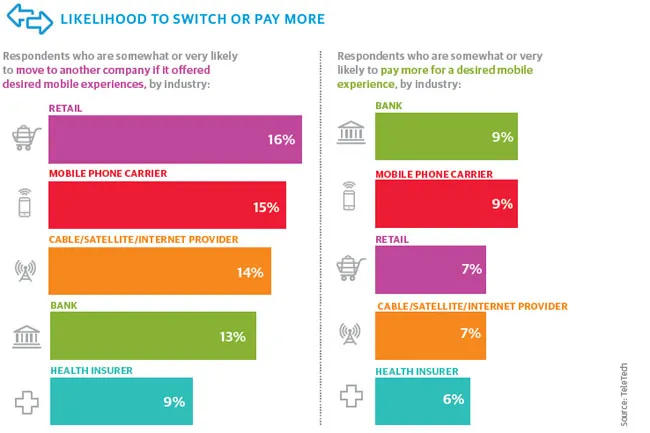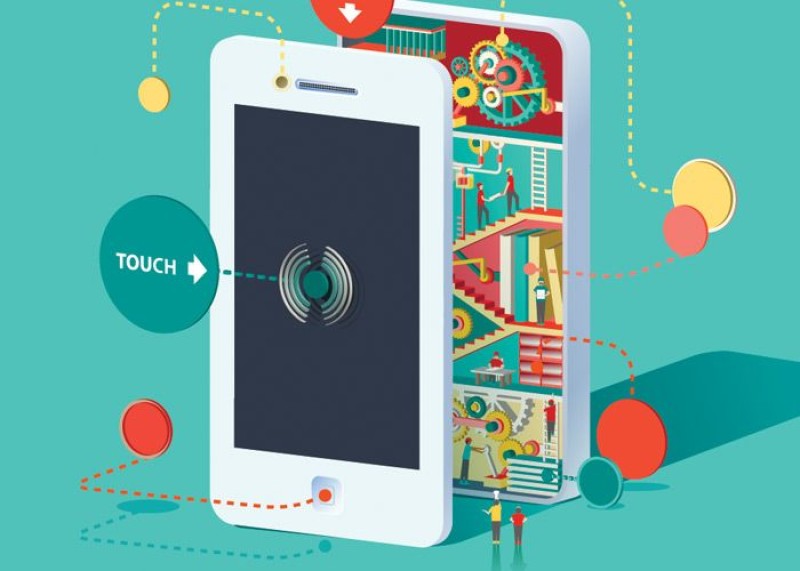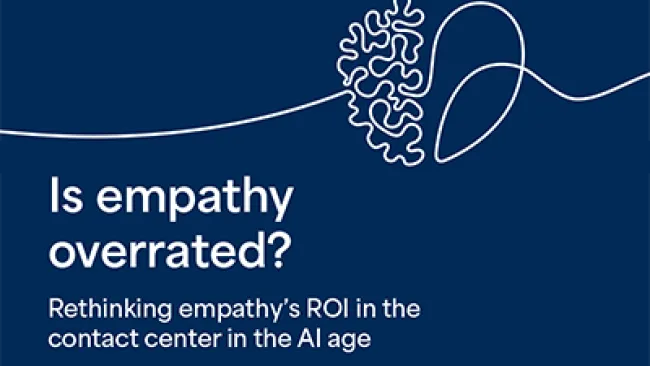Nearly a third of all Americans admit that they can’t live without their mobile phone. You’re more likely to know where your mobile phone is than your car keys. It’s become a preferred channel for personal interactions, and is now becoming expected in the business world.
How well are companies in industries such as retail banking and wireless communications meeting customer expectations for mobile experiences? And what are the key mobile experience gaps that companies need to address?
TeleTech surveyed more than 400 U.S. adults to gain insights on these and other issues related to mobile customer experience for The 2015 TeleTech Mobile Customer Expectations Study.
The results reveal a gap between consumer expectations and the mobile experiences businesses deliver. For instance, while just 1.4 percent of retail bank customers currently use their mobile devices for video chat sales or service support, nearly one quarter of all respondents (24.4 percent) would use these capabilities if their primary bank offered it.
“Part of the disconnect is that many companies aren’t devoting enough energy to understanding customer expectations for their mobile experiences,” says Travis Low, vice president of SEO and organic at Revana Digital, a TeleTech company.
A good starting point, says Low, is to map the customer journey to target customer personas across the full spectrum of digital and physical channels that customers use to understand how they use their mobile devices. This can help decision-makers identify any points of friction in the customer experience that can be addressed to improve it, as well as the overall satisfaction with the brand.
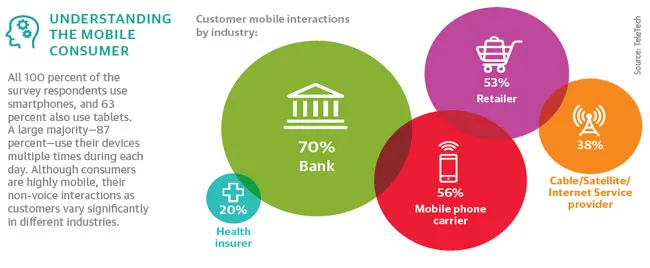
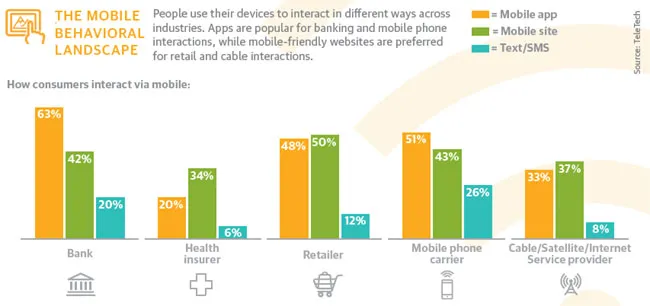
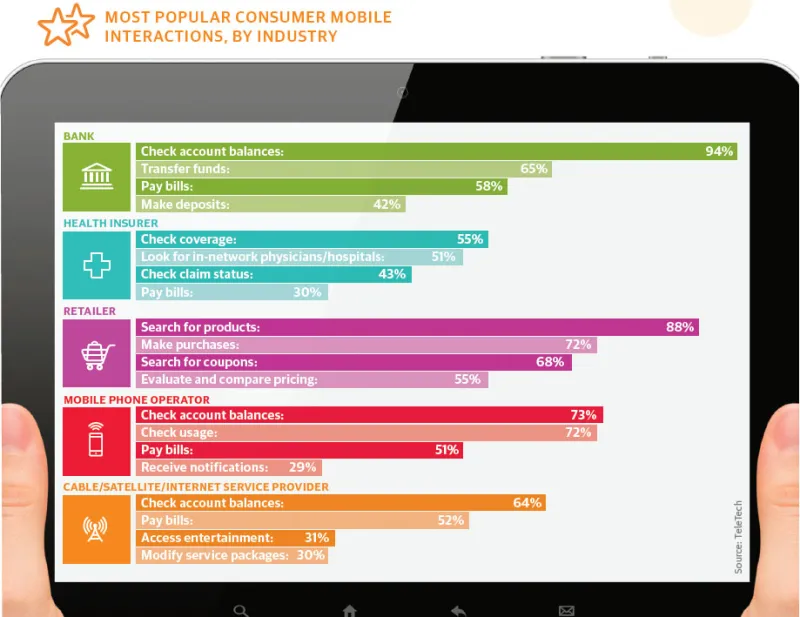
Fill the customer expectation gaps
Understanding what’s most important to customers in their mobile experiences is critical to delivering the types of experiences customers want and expect. For instance, we found that more than 88 percent of retail customers use their mobile devices to search for products. So it would be beneficial for retail leaders to optimize mobile search capabilities.
An effective way for organizational leaders to evaluate and act on customers’ mobile behaviors is through the use of speech and text analytics. “Interactions that customers have with sales associates and contact center reps offer rich insights about how customers are using their mobile devices, along with feedback they share on the types of capabilities they’d like to have that aren’t currently provided by a company,” says Low. A deeper understanding of customer behaviors and preferences can enable sales, marketing, and customer care leaders to design the types of experiences customers are looking for.
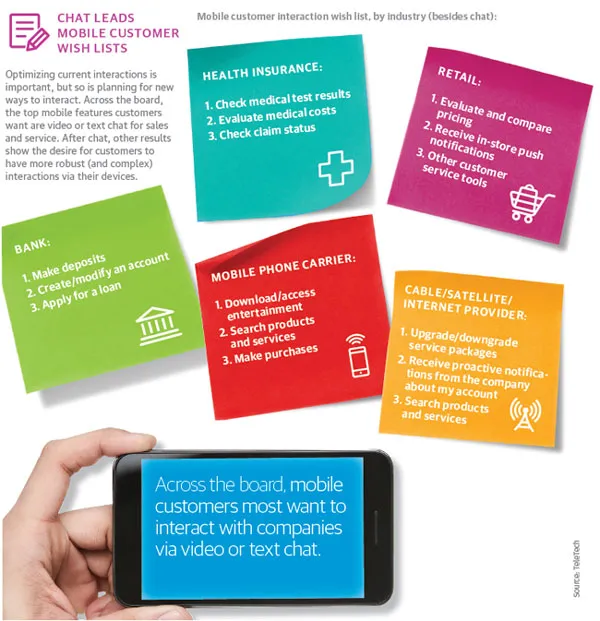
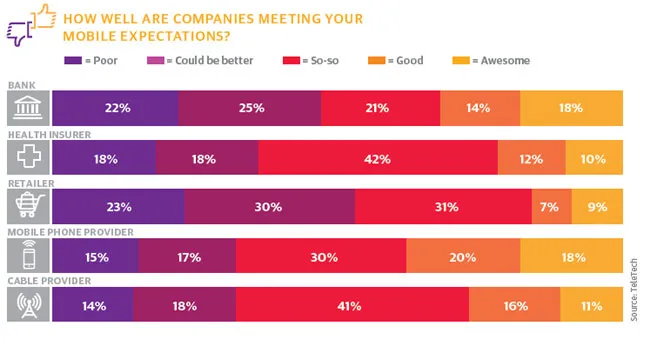
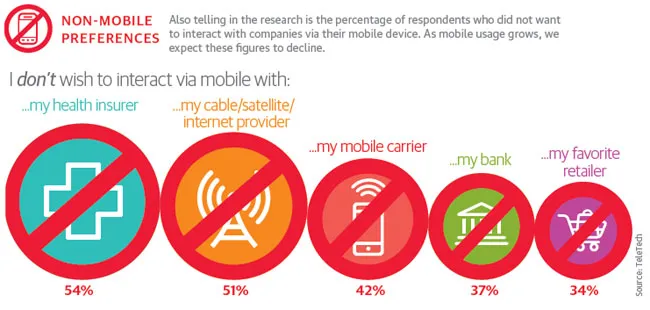
Where there's mobile, there's ROI potential
While most respondents to the TeleTech survey indicated they’re not likely to jump ship to another company that offered a better mobile customer experience, the survey results reveal that there is financial upside to a good mobile experience.
Providing customers with the types of experiences they want isn’t simply a matter of preventing churn. Optimizing the mobile customer experience and making it easier for customers to interact with your company via mobile will help lead to better mobile engagement, since customers will come to count on your company to deliver exceptional experiences. Meanwhile, better experiences will also likely translate into higher revenue opportunities and greater word-of-mouth recommendations that can strengthen business results as customers will spend more time interacting with your brand.
And in many cases, mobile interactions can take the burden off of other, more costly interaction channels, making for more efficient and effective customer experiences.
So while our research found that a relatively small percentage of consumers would switch companies or pay more for superior mobile experiences, those small figures represent millions of consumers and revenue potential.
